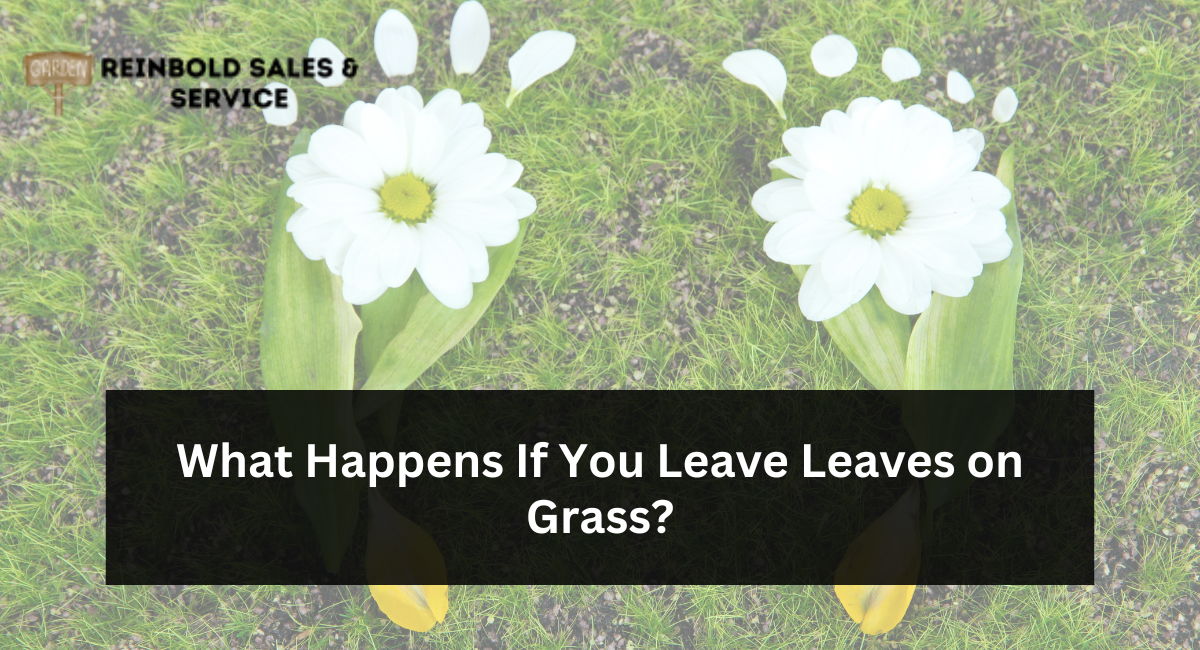Raking leaves sends them directly into landfills, where they decompose into methane gas, but there’s another option! Use your lawn mower to mulch leaves into small pieces before sending them to a landfill.
An attractive layer of leaves provides essential nutrients to the soil while offering shelter to wildlife over winter, but too many leaves may smother the grass beneath.
It Smothers the Grass
A thin layer of leaves on the grass can provide shelter for beneficial insects and reduce weed growth, while thick piles can obstruct sunlight and nutrients grass plants need to thrive. When left dampened from rain or snowfall, they become breeding grounds for fungal diseases like snow mold.
Leaves left on the lawn can help if regularly mulched with a mower or allowed to decompose slowly over time, but keeping them from piling up is best. Even just a few thick mounds of leaves can smother out grass growth, inhibiting proper development.
Furthermore, professional fertilization and weed control products might not reach their soil in time, decreasing effectiveness; so many people rake leaves regularly to keep from smothering their grass with smothered leaves.
It Can Destroy the Grass
A thick layer of leaves can suffocate grass, inhibiting its growth during winter. Furthermore, this could promote snow mold diseases that damage lawns. If left unchecked, leaves can clog drains and flood streets, causing significant issues for road users.
If you want to leave leaves on a lawn that has been recently mown, the best place for this would be where they will decompose quickly and mulch smoothly. Whole leaves can smother grassroots, restricting access to essential nutrients. This ensures these leaves decompose quickly into compostable materials or mulch.
But it is also important to remember that leaves provide essential nutrients to the soil and can help control weeds. They provide food and shelter for birds and wildlife while acting as a habitat for insects. Furthermore, leaves reduce fertilizer runoff into waterways, causing algal blooms that kill wildlife, potentially harming human health.
It Can Be a Hazard
Raked leaves can smother grass and prevent new growth come spring, making raking essential from an aesthetic and health standpoint. Unfortunately, however, landfilling them would only result in their decomposing in anaerobic conditions, producing methane gas, which has an adverse environmental impact.
Instead, allow your leaves to decompose naturally in your lawn – it serves as a natural fertilizer and may even reduce weeds when first shredded using a mower.
Leaves shelter insects, spiders, and birds seeking refuge in autumn as food sources for moth larvae and butterfly pupae in spring. By leaving leaves lying around for months after an event has taken place, leaves become natural mulch that helps retain soil moisture, slow evaporation rates, and save water while also diverting yard trimmings away from landfills–something especially crucial in Michigan, where laws mandate composting or mulching before any yard waste can be sent there.
It Can Be a Source of Pests
Leaves that remain damp can quickly turn into breeding grounds for mosquitoes, gnats, rodents, and reptiles; additionally, they can block natural drainage paths, leading to lawns and gardens flooding and turning them into mud pits.
Leaves left where they fall can provide habitats and overwintering protection for songbirds, robins, and other wild animals; additionally, they help reduce weed germination while adding essential nutrients to the soil.
But when leaves pile up into an impenetrable layer that blocks sunlight from reaching grass plants, the issue arises when photosynthesis cannot take place, and grass cannot photosynthesize as needed.
Experts advise raking leaves into garden beds as mulch, or at least into areas where they won’t smother the grass, for use later as compost material.
Or they could be put into “leaf mold” compost bins where they decompose into smaller pieces before being mown into smaller pieces to reduce their effect on lawns.
Conclusion
In conclusion, leaving leaves on grass can have many consequences for your lawn and the surrounding ecosystem. While a light layer of leaves may decompose and contribute to the soil’s health, an excessive buildup can lead to problems such as mold, pests, and inhibited grass growth.
Regularly clearing fallen leaves is essential for maintaining a vibrant and thriving lawn. By taking the time to remove leaves or utilizing them through proper mulching techniques, you can ensure your grass’s long-term health and beauty, promoting a lush and resilient landscape.
Remember, a little care for your lawn today can yield significant benefits for its appearance and vitality in the coming seasons.
